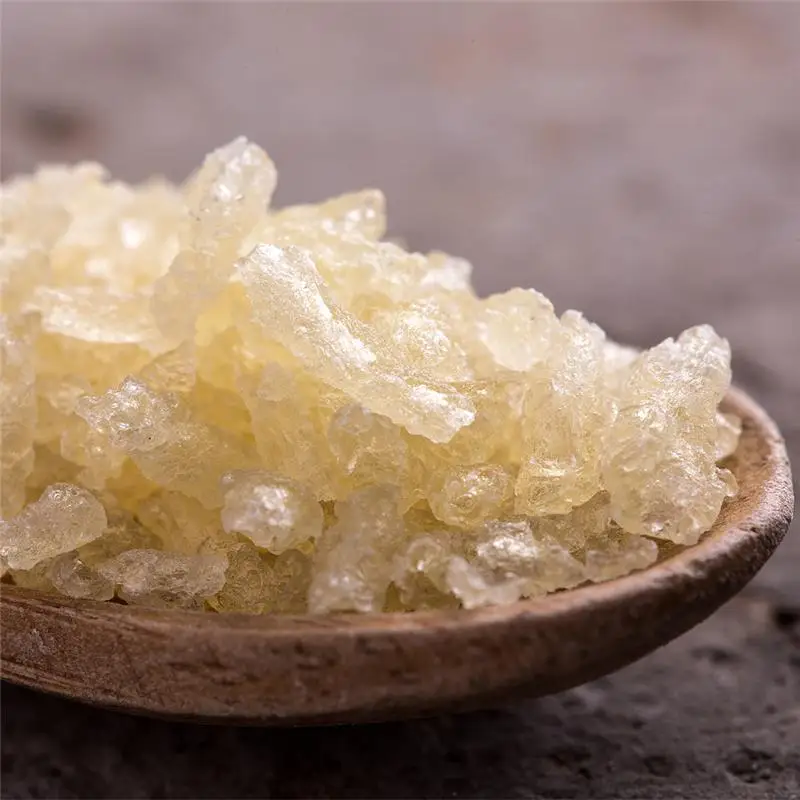

Banagel is Thailand’s leading fish gelatin producer that is certified to international standards and provides the best manufacturing services to every consumer group of all nationalities, religions, and beliefs. Fish Gelatine This is gelatine extracted from Tilapia and Basa fish skins. The production of fish gelatin requires all social principles in mind including all beliefs and religions to comply with the rules of certain consumer groups. Now that we know about fish gelatin and how does it matter, we also need to pay attention to standardized manufacturing procedures. Fish, pig, beef, and vegetable gelatin all provide: Improved bone and joint health Gelatin has been observed to reduce joint pain and stiffness. The benefits of fish gelatin What’s great about gelatin is its numerous benefits, regardless of its source. Therefore, the production and utilization of fish gelatin not only meets the needs of consumers, but is also a way to utilize industrial waste and help prevent environmental problems, and promote global sustainability. Fish gelatin is an excellent choice if you’re looking for a healthier, non-mammalian alternative. Environmentally friendly chemical strategies based on the use of non-toxic agents are, therefore, strongly demanded. Both for clear gels, and both have melting points between 95-100 degrees fahrenheit. Thus, the fish gelatin market is growing rapidly and significantly boosting the market for kosher and halal products.įishbones are also a huge waste from the fish processing industry and fisheries and can have a negative impact on the environment and nature. The majority of the crosslinking approaches employed to confer water resistance properties to electrospun gelatin mats are based on the use of potential cytotoxic agents, turning out to be not suitable for biomedical applications. It is alternative gelatin that provides the same quality and nutritional value as other types of gelatin. The gelatin from fish is, therefore, a good solution to this problem since it is considered as a type of halal gelatin.

This review focuses on the unique features, advantages, constraints, and challenges involved in the production and utilization of fish gelatin in order to provide a comprehensive look and deeper insight on this important food ingredient, as well as prospects for its future commercial exploitation and directions for future studies.Most porcine gelatin and large number of bovine gelatin are unacceptable to Jewish and Muslim consumers or certain consumer groups of some country, religion, or belief. In addition, the effect of the extraction parameters (temperature, acid concentration. bioWORLD's Microbiology Grade Fish Gelatin is extensively tested for. Fish gelatin has a high molecular weight, and the extracellular glycoprotein acts as an antifreeze. Gelatin derived from halal slaughtered cattle bones is acceptable (Halal). It is a hydrophilic chemical used in immunohistochemistry, cell culture media, and light microscope autoradiography. Find fish gelatin and related products for scientific research at MilliporeSigma. Gelatin Type B is a gelatin derived from the hides of cattle and from the bones of animals that have been demineralized.
#Fish gelatin skin#
More specifically, acetic acid and deep eutectic solvent (DES) extraction methods for marine collagen isolation are described and compared. Fish Gelatin is obtained from the skin of cold water fish. Gelatin is also used for improving hair condition and to shorten the recovery after exercise and sports-related injury 15. Some people also use it for strengthening bones, joints, and fingernails. Production and utilization of fish gelatin not only satisfies the needs of consumers, but also serves as a means to utilize some of the byproducts of the fishing industry. The fish collagen structure, extraction methods, characterization, and biomedical applications are presented. Gelatin is used for weight loss and for treating osteoarthritis, rheumatoid arthritis, and brittle bones (osteoporosis). Fish gelatin (especially from warm-water fish) reportedly possesses similar characteristics to porcine gelatin and may thus be considered as an alternative to mammalian gelatin for use in food products. Mammalian gelatins (porcine and bovine), being the most popular and widely used, are subject to major constraints and skepticism among consumers due to socio-cultural and health-related concerns. Based on the gel strength value, fish gelatin extracted at 80☌ and commercial bovine gelatin were of medium quality of gelatin class, because of gel strength in the range 150-220 g Bloom.

Food and pharmaceutical industries all over the world are witnessing an increasing demand for collagen and gelatin. Fish tail gelatine is the most widely used gelling agentin western cuisine, both in savory cooking and.


 0 kommentar(er)
0 kommentar(er)
